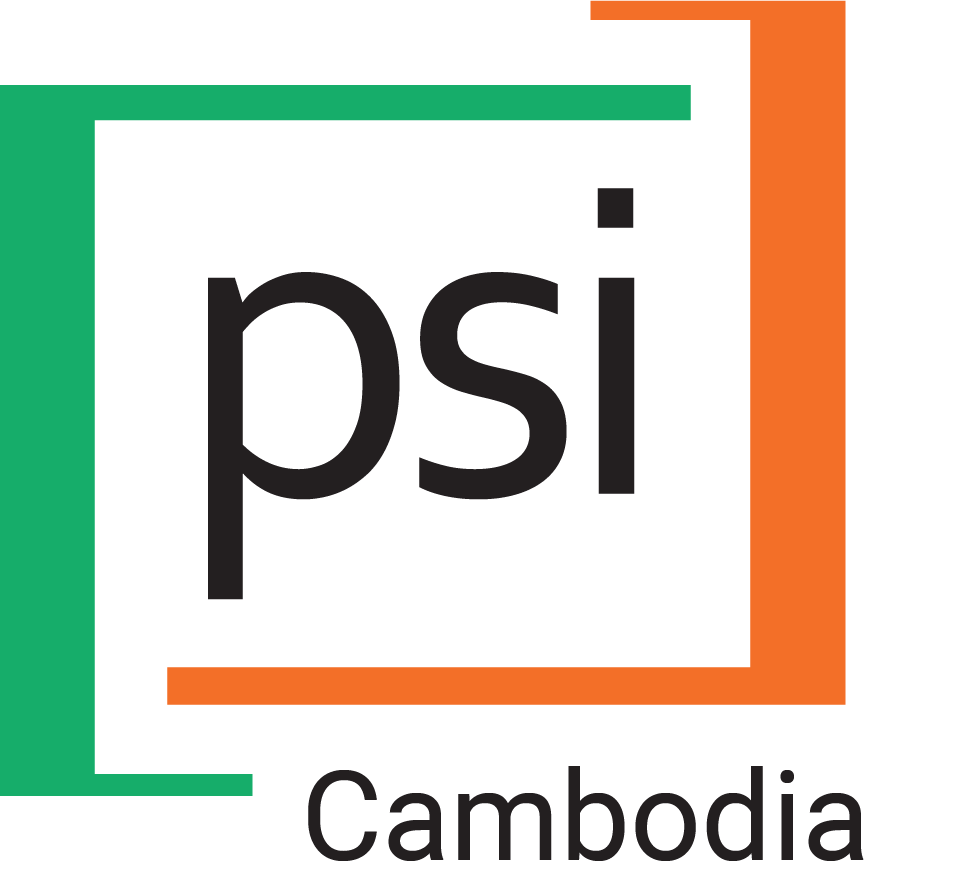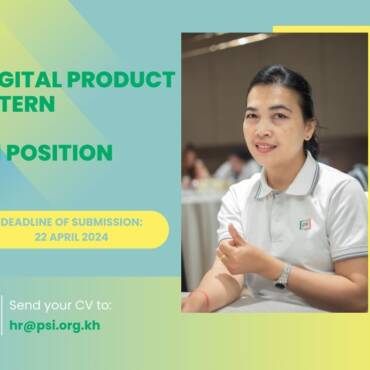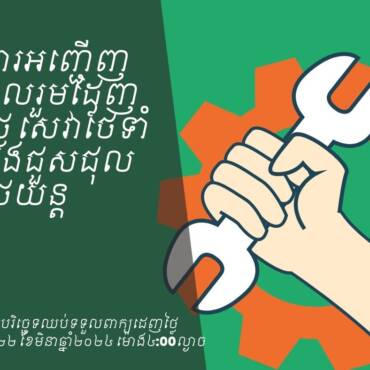From the Worst to the Best IPC Practice: Svay Chrum Health Center
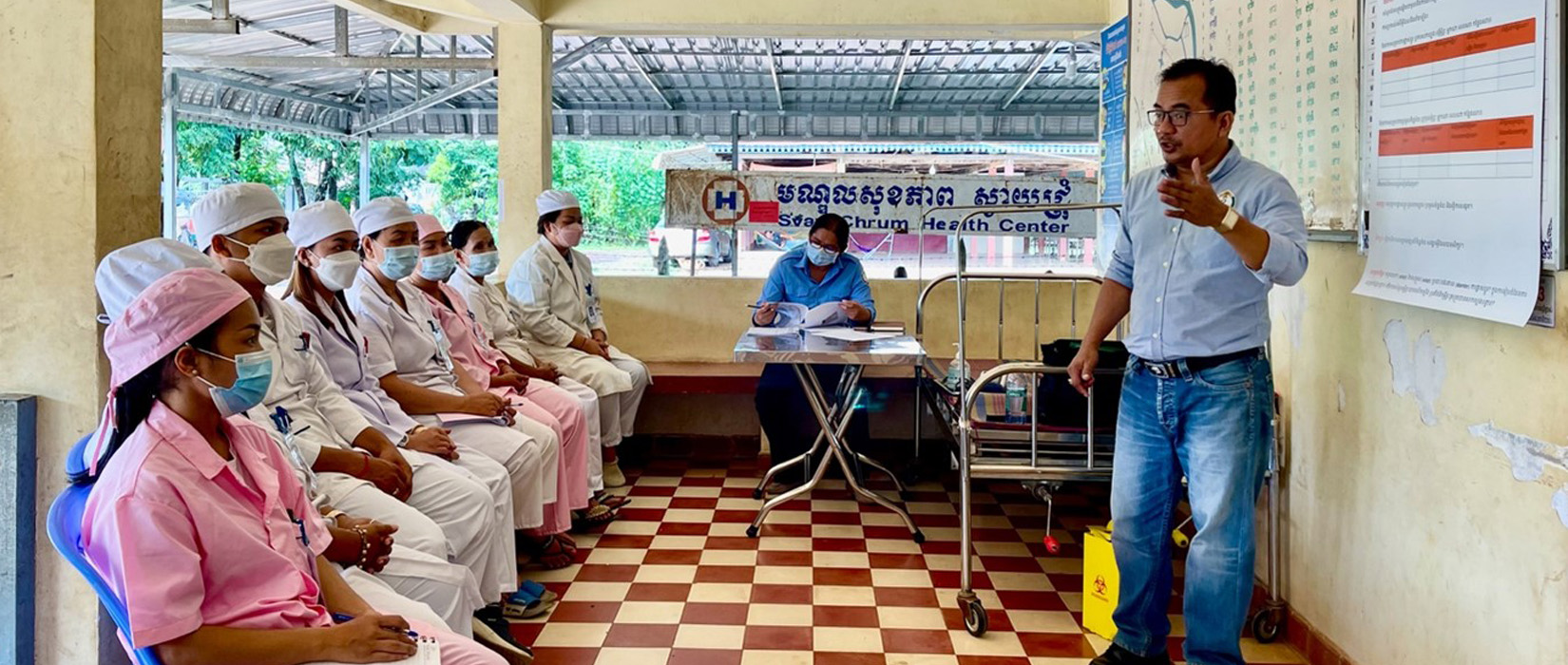
Four to five years ago, patients always complained about the poor management of waste and cleanliness of Svay Chrum HC in Kampong Chhnang province. The daily practices on medical waste management such as waste separation, storing, and incineration at this health center was not properly implemented in accordance with the national IPC guideline of the MOH, according to Chhe Chanthoeun, a midwife staff and the IPC committee member of Svay Chrum HC.
Previously, there were some challenges in managing the IPC for the HC due to lack of IPC trainings for new staff and no encouragement from the management team on improving hygiene and sanitation.
The HC did not have enough handwashing areas and waiting space, or basic equipment such as standard trash bins and plastic bags. Patients threw garbage everywhere at the HC, and health staff did not redirect them not to do so. Particularly, the health care team was not aware of QI methods or an IPC improvement work plan, according to Chanthoeun.
Chanthoeun said, “A few years back, our health center was very poor in managing IPC. We did not have IPC committees. We received very little coaching from the operational district, and we did not have any opportunities to learn the best practices of IPC management from other facilities.”
In December 2019, the HC was assessed with the NQEM tool for IPC. It received a very low score of 28.90%. In addition, the number of patients who visited the HC was low.
Svay Chrum Health Center provides essential health care services to 22 villages in the area with a capacity of 1,000 patients per month. Improving IPC is very important for the HC team to deliver quality of care, improve patient safety, and protect all those providing care in the health system, according to Chan Buntha, technical officer, and QI coach from Boribo OD. He said, “IPC standards should be in place at the national and facility level to provide minimum protection and safety to patients, health workers and visitors.”
In August 2020, The USAID- EQHA in collaboration with Kampong Chhnang provincial health department and technical team from Boribo OD, trained and coached staff on the practical quality improvement collaborative approach using MFI and PDSA testing cycles to address the IPC problem.
“We learned to identify our problems on IPC. We developed a QI plan and selected IPC change ideas to work on. We set up our aim and using the MFI approach with our measurements and indicators for the IPC improvement of the HC,” said Thea Ty, chief of Svay Chrum HC. Thea admitted that his staff really benefited from the QI training and coaching supported by the USAID-EQHA and OD team.
According to Chanthoeun, the HC team developed an IPC work plan and checklist adapted from the national IPC guideline, and established IPC committees for IPC monitoring at all units of the HC. All the staff are required to do IPC self-assessments at least two times per month and to provide hygiene and sanitation education for their clients once each week. She said that the HC teams also implemented IPC self-assessments using a checklist twice weekly, and created a run chart for monitoring performance progress.
The Svay Chrum HC received monthly coaching and refresher trainings relating to IPC waste management until September 2021 for all staff, including cleaners. From December 2021 to August 2022, the HC staff received quarterly coaching that helped them adhere to the national guidelines on IPC and enhance their NQEM performance.
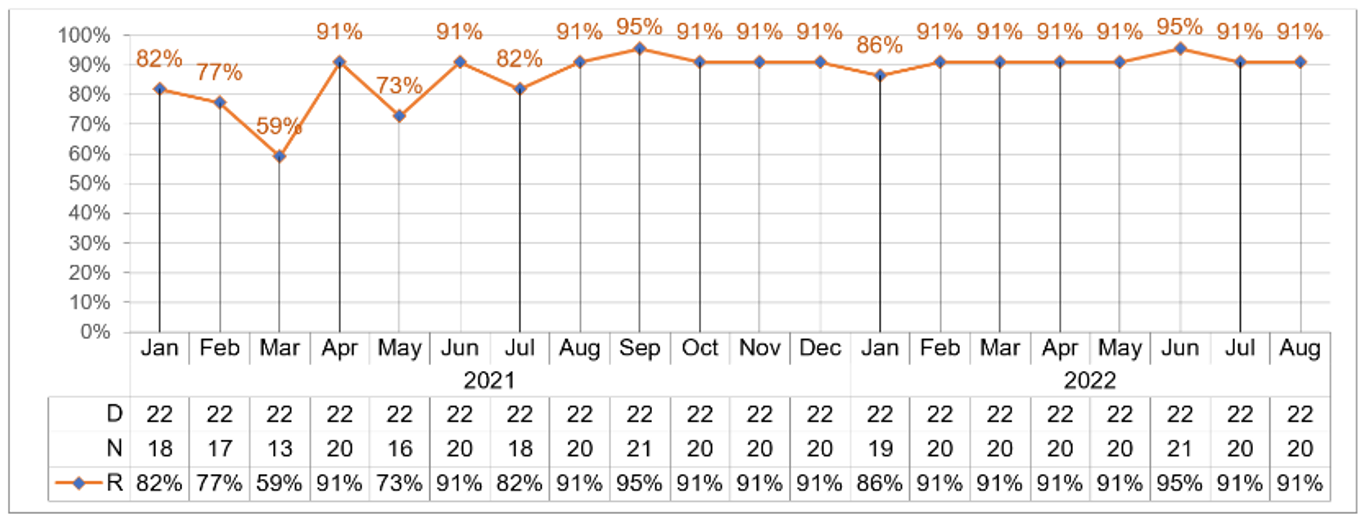
IPC Run-Chart for Svay Chrum HC, from Jan 2021-Aug 2022
Two years later, after the implementation of the IPC quality improvement work plan, the health center’s self-assessment score for IPC increased to 91 percent in August 2022, compared to the baseline in August 2020 of only 14 percent.
“I’m happy to see the improvement progress of our HC, especially on the significant changes regarding the IPC. As a result, we can see the number of patients visiting our HC for healthcare has increased around 20 percent between 2021 and 2022. This is because of the knowledge we gained from the EQHA, and it makes us very confident to provide healthcare services to our people with quality and safety,” said Thea Ty, chief of the HC.

Practicing waste sorting exercise with Boribo OD team at Svay Chrum HC.
Sao Thim, 47 years old with four children living in Oleach Village, Banteay Preal Commune, Rolea Bier District of Kampong Chhnang Province, said he is very satisfied with the health care services of Svay Chrum Health Center. Health care staff are very friendly and take good care of the patients.
“Particularly, I like the cleanliness of the health center. It has proper trash bins and hand washing areas with enough water and soap,” said Sao Thim.
Thea Ty smiled and expressed his appreciation for the support from the EQHA and OD team. He said the QI intervention helped his HC sustain improved IPC practices. Since August 2022, his HC decided to stop testing PDSAs for IPC, but they are continuing to follow IPC standards and protocols from MOH and implement the IPC workplan routinely by themselves.
